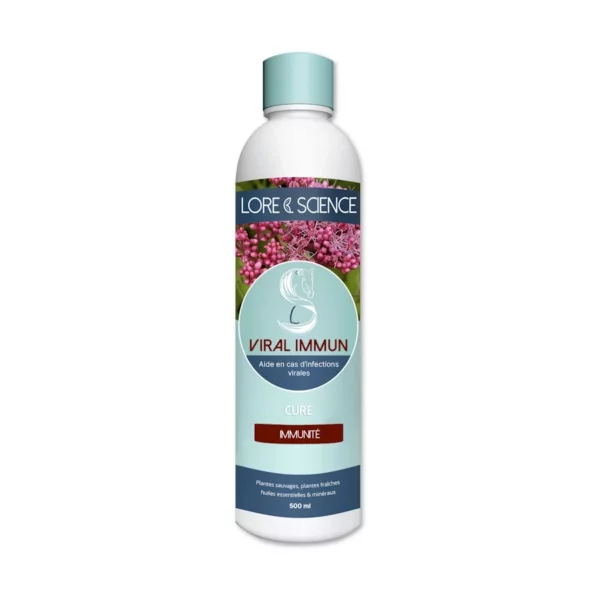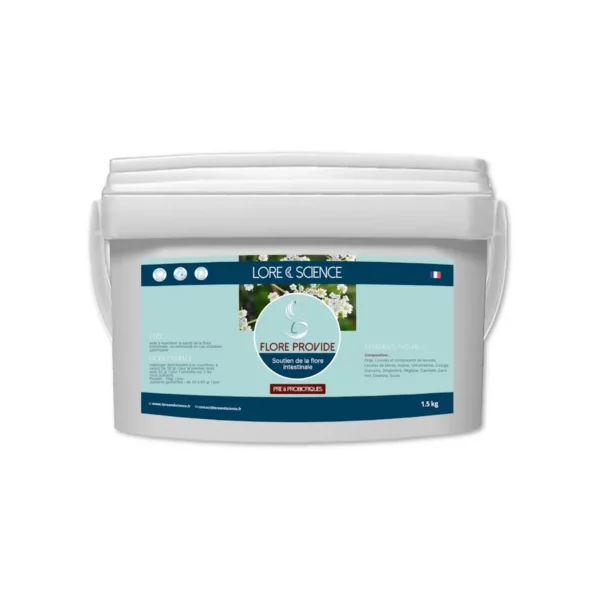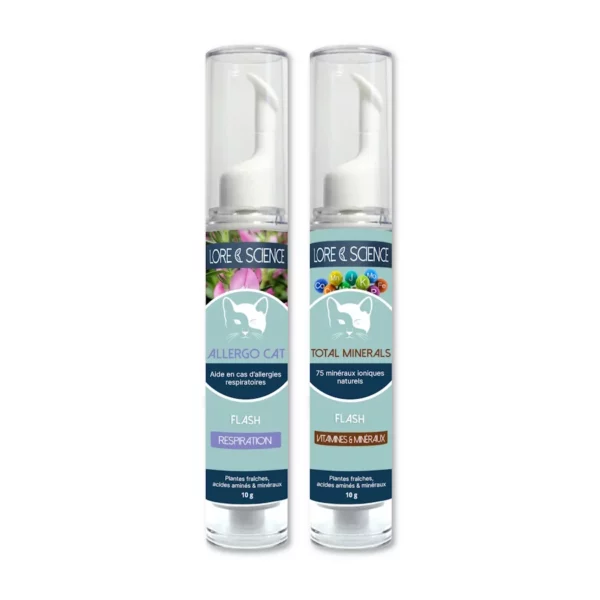Most horses are exposed to theequine herpes virus during their lifetime.Viral herpes, more commonly known as rhino, is caused by the EHV virus. Highly contagious, rhino primarily affects the respiratory tract, but can also have devastating neurological and reproductive effects. In this article, Lore & Science tells you all about rhino: its symptoms, its impact on a horse's health, and the natural and medical ways to strengthen our equidae's natural defenses against this invisible threat.
EHV-1 and EHV-4: The different forms of viral herpes
There are several types of EHV, but the two most frequently encountered areEHV-1 andEHV-4. The first of these, EHV-,1, is of major concern because of its particularly severe clinical repercussions. This virus not only causes respiratory diseases, but alsoabortions in mares anddebilitating neurological disorders such as myeloencephalopathy. This often feared neurological condition can lead to partial or total paralysis, or even death in the most severe cases.
In comparison, EHV-4, although less virulent than its counterpart, remains a source of concern. The latter manifests itself mainly through respiratory infections, affecting foals and young horses in particular. The symptoms it causes, often likened to those of a cold, can nevertheless considerably weaken a horse, compromising its vitality and natural resistance. The general weakening of the organism it induces opens the way to other infections, accentuating the need for appropriate preventive measures to protect the youngest equine populations.
How is equine rhino transmitted?
It's important to remember that the rhino virus is spread by direct contact between horses, or via contaminated surfaces such as water buckets, racks, or even the clothing of people in contact with infected horses. Viral episodes can therefore be more easily triggered in environments where horses are in close contact: stables, riding schools, or during competitions, for example. Early recognition of rhino symptoms is therefore essential to prevent the spread of the virus and to provide the necessary care.
What are the symptoms of rhinitis in horses?
Clinical manifestations of rhino may vary depending on the form of infection (respiratory, neurological or reproductive), but certain symptoms are common.
Respiratory symptoms
The first signs of rhinopneumonia virus infection in horses often manifest as a sudden high fever, often accompanied by marked lethargy and reduced appetite. These initial symptoms are rapidly followed by the appearance of a nasal discharge, initially clear, which may progress to a thicker, purulent secretion as the infection worsens. Coughing, usually dry and persistent, then becomes a recurrent symptom, and in the most severe cases, the horse's breathing may become labored, indicating that the infection has reached the deep respiratory tract.
Neurological symptoms
The neurological manifestations of EHV-1 are particularly worrying, requiring urgent veterinary intervention. One of the first indications is ataxia, where the horse loses its coordination, resulting in a hesitant, stumbling gait. This is often accompanied by weakness of the hind limbs, making it difficult to maintain a standing position, to walk, or even to stand up after lying down. In the most severe cases, partial or complete paralysis can occur, and unfortunately, this can be irreversible. Another telltale symptom isurinary incontinence, which betrays a deeper involvement of the nervous system.
Reproductive symptoms
EHV-1 infection also poses serious reproductive risks, particularly for pregnant mares. One of the most dramatic consequences is abortion, often occurring late in gestation, or the birth of weak foals that succumb shortly after foaling. What's more, the infection can lead to temporary infertility in some mares after the viral episode.
How is rhino diagnosed?
The first thing to do if you suspect viral herpes in your horse is to contact your veterinarian. Only he or she can diagnose equine rhinopneumonitis, after assessing clinical symptoms and performing specific laboratory tests. A PCR (polymerase chain reaction) test usually detects the presence of the virus in the horse's nasal secretions or blood, while serological tests measure the animal's immune response. This comprehensive diagnostic approach is essential to confirm the presence of equine viral herpes and adapt treatment accordingly.
The link between rhino and sarcoid in horses
Sarcoid is a common skin tumor in horses, the exact etiology of which remains uncertain, although some researchers suspect a link with viral infections, notably equine viral herpes. The herpes virus, by weakening the horse's immune system, could create a breeding ground for the development of sarcoids, although this hypothesis still requires further research to be confirmed. The weakening of the horse's natural defences, induced by recurrent viral episodes, could allow the bovine papilloma virus, often associated with sarcoids, to establish itself and proliferate. This interaction between viral herpes and the development of sarcoids underlines the importance of vigilance in the management of viral infections in horses.
How is equine herpes treated?
There is no specific remedy for equine viral herpes, but there are a number of things that can be done to alleviate the symptoms and improve the horse's chances of recovery. First of all, complete rest is essential to allow the animal to recover fully. At the same time, a balanced diet, rich in fiber and essential nutrients, helps support the horse's natural defenses.
To support and strengthen a horse's immune defenses during and after a herpes virus infection, the use of natural feed supplements can be extremely useful. One such supplement is Viral Immun, a formula based on fresh plants, essential oils and carefully selected minerals. This 100% natural food supplement is specifically designed to fortify equidae's natural defenses during periods of viral contamination. It not only helps restore the horse's energy and general condition, but also helps prevent relapses for a full recovery.
Medication may be required to control the most severe symptoms: non-steroidal anti-inflammatory drugs (NSAIDs) to reduce fever, antibiotics to prevent or treat secondary bacterial infections such as pneumonia, etc. In certain specific cases, antivirals may be considered in an attempt to limit virus replication, but their efficacy remains to be proven and is often the subject of debate among specialists.
Conclusion
In conclusion, rhino, or equine viral herpes, remains a threat to equine health, due to its highly contagious nature and potentially devastating effects on the respiratory, neurological and reproductive systems. Vigilance and responsiveness to early signs of the disease can make all the difference. Although curative treatment of rhino is limited, a preventive and comprehensive approach, combining medical care and nutritional support, can go a long way towards limiting the impact of this disease on equine populations.
Share your experience or questions with us in the comments ↓
















